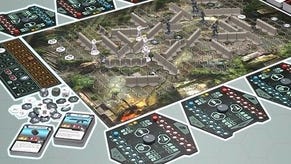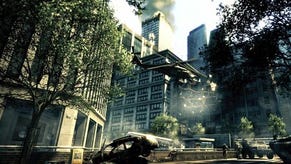Tech Comparison: Crysis 2 PC
Maximum Game... over?
Also puzzling is Crytek's insistence on sticking with its "Post MSAA" anti-aliasing solution, even on max settings. The studio reckons that it shouldn't be referred to as temporal AA, but it is clearly based on similar principles of reprojection, and while the ghosting artifacts of the console version are much reduced when you have a 60Hz refresh, it still lacks the quality of proper multi-sampling. Post MSAA may well save on GPU resources, but omitting the option to switch to alternative forms of anti-aliasing seems unnecessarily prohibitive.
So where does the PC version have noticeable improvements? The utilisation of higher-precision FP16 render targets means that the game's HDR lighting is smoother and more refined on PC straight off the bat, regardless of the visual settings. The leap in terms of light sources and dynamic shadows from High to Extreme isn't really so noticeable during gameplay, but in still shots it's clear to see just how much more is going on.
Screen space ambient occlusion (SSAO), which debuted in the original Crysis, is improved in the sequel with higher quality levels based on higher resolution and two passes while the game's water effects - impressive on all platforms - are upgraded to full vertex displacement on PC (so the waves react more realistically to objects passing into the water). Motion blur and depth of field also get higher-precision upgrades on PC too.
While there may only be three different visual settings, it's actually surprising just how low the graphics card requirement is to get a decent experience in Crysis 2. In part, PC owners have the console focus to thank here - Crytek's requirement of supporting the game on systems with limited GPUs and relatively tiny amounts of RAM required an optimisation effort that can only benefit the computer version.
According to the developer, the base hardware is a 512MB 8800GT: an old, classic card that's only really started to show its age in the last year or so. On the lowest setting (which is still a visual treat), this is still good for around 30-40FPS at lower resolutions such as 720p and 1280x1024. If you're looking for decent performance at 1080p, a GTX260 or 8800GTX is recommended while 1080p60 at the Extreme level really requires a Radeon HD 6970 or GTX580. Luckily, we've got one of the latter cards installed in our test rig.
In terms of the CPU you'll need, things have definitely moved on from the days of the original Crysis, where the engine code was optimised for dual-core processors. Crysis 2 is quad-core aware, and while it runs perfectly well with just the two cores, ideally you should be targeting something along the lines of a Q6600 or better.
Of course, it's great that a game that looks this good is accessible and playable on a much broader range of hardware than its predecessors, but unless the enthusiasts find and unlock new features in the engine, the idea of a maxed-out Crysis game being a technological holy grail is now a relic of the past - with a Core i7 and a GTX580, we got very, very close to 1080p60 at max settings straight off the bat. The notion of a Crytek game being a vision of the future appears to be over - now it's all about getting the most out of present-day mainstream hardware.
Is this such a bad thing? In some ways it's difficult not to feel some sympathy for Crytek, bearing in mind the sheer flak it is getting from the PC user base. In terms of most multi-platform releases, the developer has gone way beyond the competition in supporting the PC community - the enhancements may seem subtle, but there's little doubt that this is the best version of Crysis 2, if not perhaps the definitive version we might have hoped for. The problem is that the basic setup of the visuals and the run of play itself was designed for the Xbox 360 and PlayStation 3, so the opportunity for engine enhancements to really shine is somewhat limited.
That said, there are plenty of elements in the PC version that stand out as being either inadequate or just downright antagonistic. The three engine presets and the lack of user-friendly customisation for the visuals comes across almost as if the developer is trolling its own fanbase, and the inclusion of just a DX9 renderer setup out of the box is also disappointing bearing in mind Crytek's reputation for operating at the bleeding edge of graphics technology.
Of course we can expect the situation to improve over time in some respects. The ability to tweak the various visual components of the PC version is already being tackled by the community and higher-resolution textures from the community and tweaked level setups are almost certain to follow at some point. Maybe even Crytek will pitch in with additional upgrades - the DX11 patch must surely be happening at some point.
What won't change is the actual make-up of the gameplay, though. In some ways, the console-inspired streamlining is a great success - the selection of the Nanosuit modes is much simpler, and switching between, say, stealth and armour is much more natural and easy to accomplish now. There's also little doubt that the game narrative and the utilisation of Call of Duty-style set-pieces greatly adds to the Crysis experience, and allows the developer to really show off some of the amazing feats that CryEngine 3 is capable of.
However, a crucial element of what made Crysis feel unique was the way in which it seemed almost like an open-world game, despite being relatively linear. The transfer across to the concrete jungle of New York City narrows the focus of the piece and limits the gameplay opportunities in comparison, and in the process makes the extraordinary concept behind Crysis feel a little more pedestrian. A third instalment is almost certainly in development now - it'll be interesting to see where the developer takes the franchise next.
















